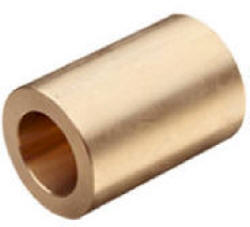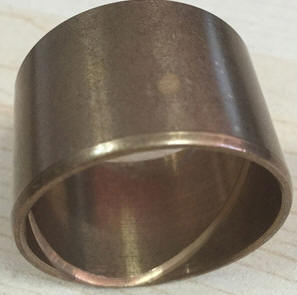



White metal solid bush
Teflon solid bush
Bearings - Friction bearings - Solid bush bearing
A bushing, also known as a bush, is an independent plain bearing that is inserted into a housing to provide a bearing surface for rotary shaft.
Most common materials used for solid bush bearings are:
|
|
|
|
|
| Solid brass bush | Solid brass bush with oil grooves |
White metal solid bush |
Teflon solid bush |
Solid bush bearing applications:
Plumber block with bush
Plummer Blocks are used where high performance and high load capacity is required.
Hanger bearing with bush
Hanger bearings provide a bearing surface to support a screw section when multiple screw sections are used in a screw conveyor. Hanger bearings are journal or plain type bearings that mount in hangers and are replaceable when worn. Hanger bearings also support overhead shafts.
Taper bush bearing
These type of bearings are used where there is radial loads together with a large axial load such as in machine spindles.
|
|
|
Single and multi-collar thrust bearings
The simple type of thrust bearing for horizontal shafts consists of one or more collars cut integral with the shaft as shown in figure These collars engage with corresponding bearing surfaces in the thrust block. This type of bearing is used if the load would be too great for a step bearing, or if a thrust must be taken at some distance from the end of the shaft. Such bearings may be oiled by reservoirs at the top of the bearing
Footstep bearing
A footstep bearing
is usually in the form of a block that has a cavity in which the lower part of a
shaft can be fitted. It is designed to provide support to a vertical shaft or
spindle.
A footstep bearing has two parts. One of them is a tubular bushing which
radially guides the spindle shaft. The second part is a bearing step which is
located in the frontal end of the bushing. Both the sections are joined together
in a compressive interlocking arrangement. In this way a unitary assembly is
provided.
This assembled 2 piece footstep bearing can be combined with the structural
elements of the spindle bearings, for instance, with a centring tube to give
more support.